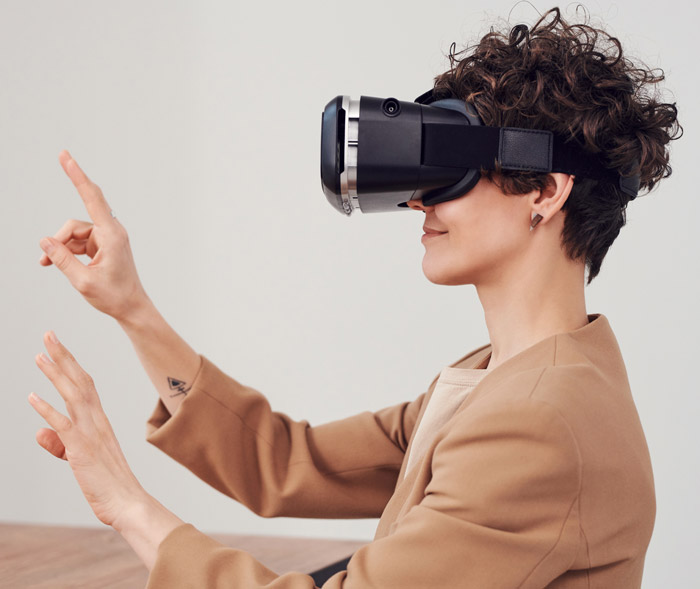Eye health Tech
Visual Field Testing

eye health tech
Visual Field Testing
A visual field is the entire area that you can see while looking straight ahead. Your visual field includes everything that you see, including what is in your central vision (what you are looking directly at) and your peripheral vision (what you see around the edges of your vision).
Visual field testing is important because it can detect vision loss or damage to your peripheral vision that may not be noticed otherwise. Many eye diseases, such as glaucoma, can cause damage to your peripheral vision that may not be noticeable until the damage is severe. Regular visual field testing can help detect these changes early, allowing for earlier intervention and treatment.
At SIGHT in West Hartford, we use the latest in visual field testing technology to more accurately identify vision problems.
Virtual VR visual field testing
One of the technologies we use is virtual VR, which is a virtual reality-based visual field testing system. It is a non-invasive, painless, and fast test that provides accurate and reliable results. The system uses a headset that is worn by the patient and displays various images and stimuli to measure their visual field.
How does virtual VR work?
Virtual VR works by displaying a series of images and stimuli to the patient while they wear the headset. The images and stimuli are displayed in different parts of the patient’s visual field, and the patient is asked to respond to them by pressing a button or giving a verbal response. The system then analyzes the patient’s responses to create a map of their visual field.
Why is virtual VR an important tool for eye exams?
Virtual VR is an important tool for eye exams because it provides a more accurate and detailed assessment of a patient’s visual field. It can detect subtle changes in the visual field that may not be detectable with traditional visual field testing methods. This is particularly important for individuals with conditions that affect their visual field, such as glaucoma, retinal diseases, or brain injuries. Early detection and monitoring of these conditions can help prevent or slow down vision loss and improve overall eye health.
Humphrey® Field Analyzer – HFA II-i Series
Validated by more than 30 years of research, design, and clinical experience, the Humphrey® Field Analyzer (HFA™) is the accepted standard of care for the diagnosis and management of neurological diseases, including glaucoma. The Humphrey Field Analyzer Guided Progression Analysis™ (GPA™) software differentiates statistically significant progression of visual field loss from random variability. The analysis is based upon detailed empirical knowledge of the variability found at various stages of glaucomatous visual field loss through information acquired in extensive multi-center clinical trials worldwide.
If you have any concerns about your vision or would like to schedule an appointment for visual field testing, please contact our office in West Hartford today.
